From the halls of DC, Charlton, Marvel…
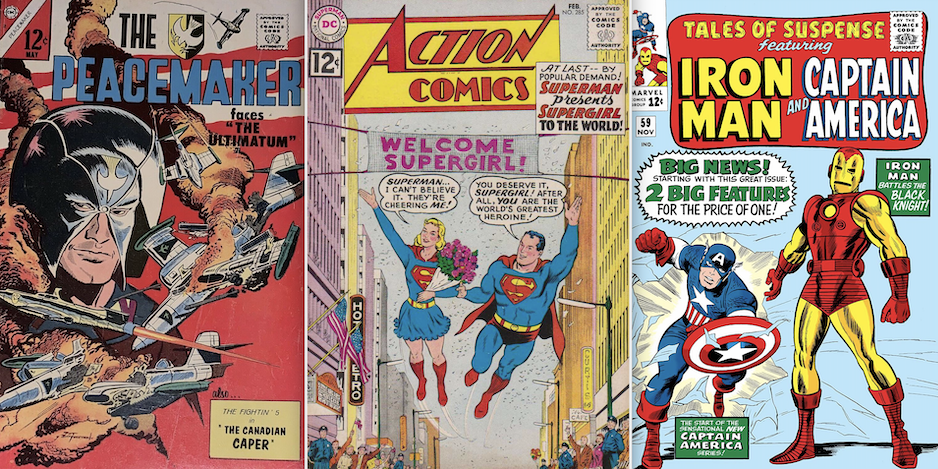
—
UPDATED 11/21/24: Time to dig deep into the cavernous 13th Dimension vaults! Every so often I like to reprint a story that was popular the first time around, just for the hell of it. This is one of those, from November 2020. Dig it! — Dan
—
By PAUL KUPPERBERG
Yes, I know there are no characters on this list created much after about 1966, but that just proves my theory: “The Golden Age of Comics is whatever you read when you were 11 years old.”
And, yes, I know the majority of my picks are DC characters. Marvel Comics didn’t exist when I first became conscious of comic books, and by the time I was old enough to start to appreciate them, I had pretty much gone all-in on DC. I would become a reader and a fan, but few Marvel characters would have the same impact on me as Superman, Batman, Wonder Woman and the rest of the DCU. (By the way, of the 13 characters that made this list, I would get to write 11 of them in one form or another in my professional career. Cool, right?)
But, ultimately, when you start trying to rank your nostalgia, 13 slots are never going to be enough…
—
13. The Hulk, Marvel. “Hulk smash!” Yeah, smash ‘em, Hulk! For reasons that we need not get into, I carried around a lot of anger as a kid, and unlike me, the great green monster created by Stan Lee and Jack Kirby in 1962 didn’t have to keep his rage bottled up inside him. The Hulk could just let it all out and pity the poor Army battalion that got in his way!
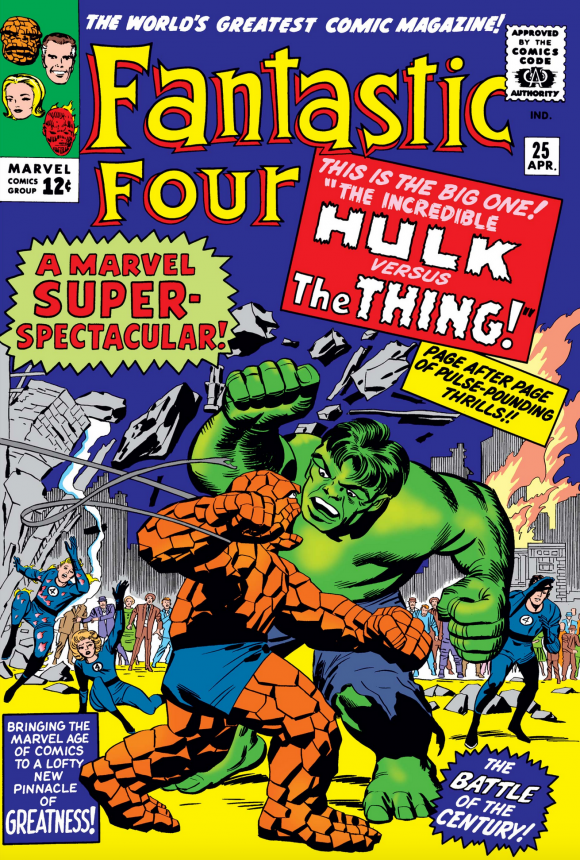
My introduction to the Hulk came in Fantastic Four #24-26 (April–May 1964) in an epic slugfest between him and the Thing… and the FF… and the Avengers. Yeah, this one, as Stan would have said, had it all. He got his own strip a little while later in Tales to Astonish, sharing the book first with Giant-Man, then the Sub-Mariner, and featuring an amazing string of talent: Steve Ditko, Kirby, Gil Kane, Bill Everett, Marie Severin, and later on, of course, Herb Trimpe.
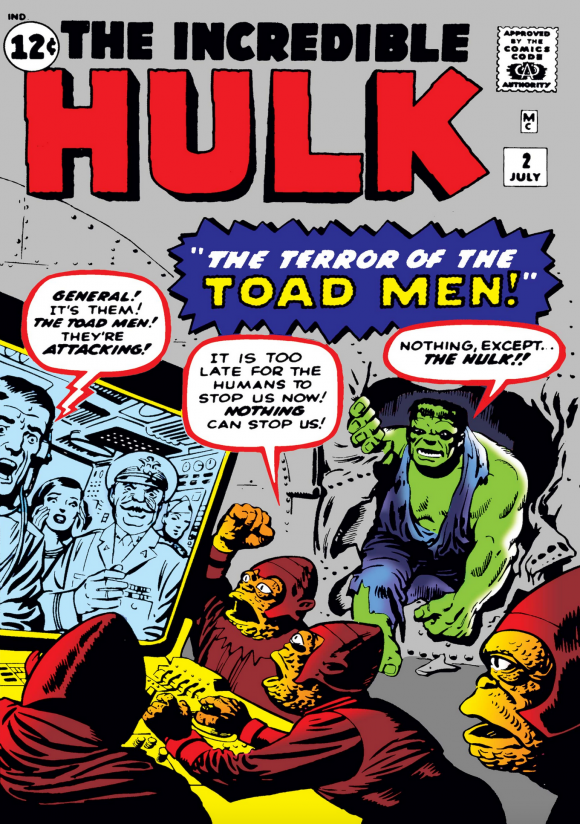
But it was the original six-issue run of The Incredible Hulk (May 1962–March 1963), which I furtively read from my brother’s collection, that solidified my love for the Mr. Hyde inside of Dr. Jekyll, aka Bruce Banner. This was the Green Goliath at his most raw as Stan and Jack kind of felt their way around this complicated character and were trying to figure out what made him tick.
—
12. Sad Sack, Harvey Comics. There must have been something close to 1,000 issues of various Sad Sack titles published over 30 years by Harvey Comics. Before that, George Baker’s The Sad Sack (a condensed and family friendly version of the Army expression, “sad sack of s**t,” meaning a screw-up or inept soldier) had appeared in Yank, the Army Weekly during World War II, and then as a syndicated newspaper strip, and had been adapted (loosely) as a 1957 Dean Martin/Jerry Lewis film directed by George Marshall.
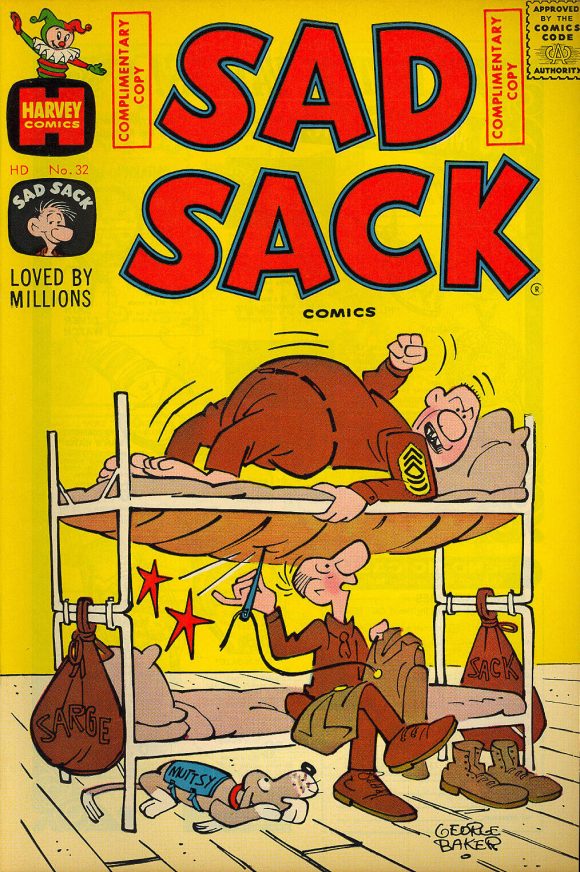
The Sack struck a chord with me. I shared his disdain for hard work. I loved the way he had all these layers of bureaucracy pressing down on him, from the Sarge to the General, but it didn’t matter to him. And I especially loved that while the bullying Sarge might have gotten in a kick to the Sack’s ass, it was Sarge who usually ended up head-first in a garbage pail or wrapped up like a mummy in bandages in the infirmary, following the Code of Comedic Military Justice. It was, in its own idiotic way, entirely subversive and anti-establishmentarianism.
—
11. Wildcat, DC. Blame this one on Neal Adams. Wildcat, aka champion heavyweight boxer Ted Grant, first appeared in Sensation Comics #1 (January 1942), created by writer Bill Finger and artist Irwin Hasen, disappearing along with the rest of his costumed chums by the end of the decade.
But you couldn’t keep Ted Grant down for the 10 count and he was back in the 1960s, popping up as a guest-star in several Justice League of America/Justice Society of America crossovers, a Murphy Anderson-drawn issue of The Brave and the Bold and, in 1968, The Spectre #3, written by Mike Friedrich, with art by Adams.

I’m a fan of Irwin Hasen’s art (and an even bigger fan of Irwin himself). I revered Mike Sekowsky’s JLA work. And I bow to no man in my admiration for Anderson. But no artist had ever made the Wildcat costume work the way Neal did in that story, from the top of his ears to the claws on his toes.
—
10. The Flash, DC. Long story short: When the Earth-One Barry Allen Flash crosses over to Earth-Two for the first time in The Flash #123 (Sept. 1961) to meet the Jay Garrick Flash, the newspaper he sees is dated June 14, 1961. My birthday! I didn’t see this until several years later, when the story was reprinted in a Flash Annual, but somehow, this made me feel like I was involved in the events of these worlds.
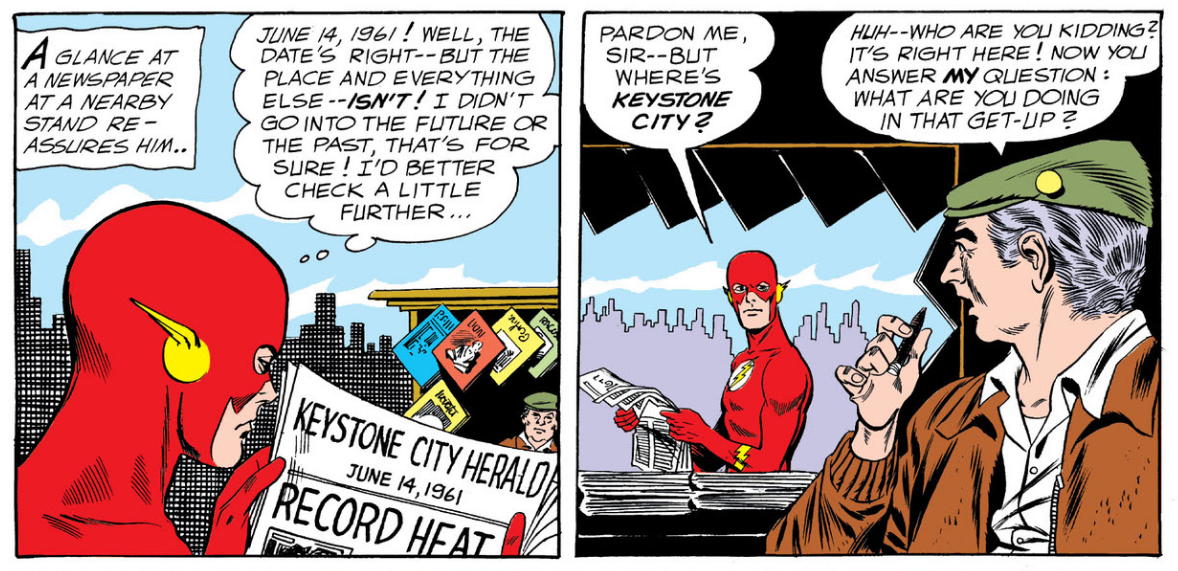
Besides that, the mid-1960s run (if you will) of The Flash was probably one of DC’s best titles. Written by editor Julie Schwartz’s best friend, John Broome, and drawn by one of the stars of his artistic pool, Carmine Infantino, the book was always fresh and imaginative, with some of the best covers on any title at the time. (“I’ve got the strangest feeling I’m being turned into a puppet!”) I wrote all about them in the introduction to The Flash Archives Vol. 6.
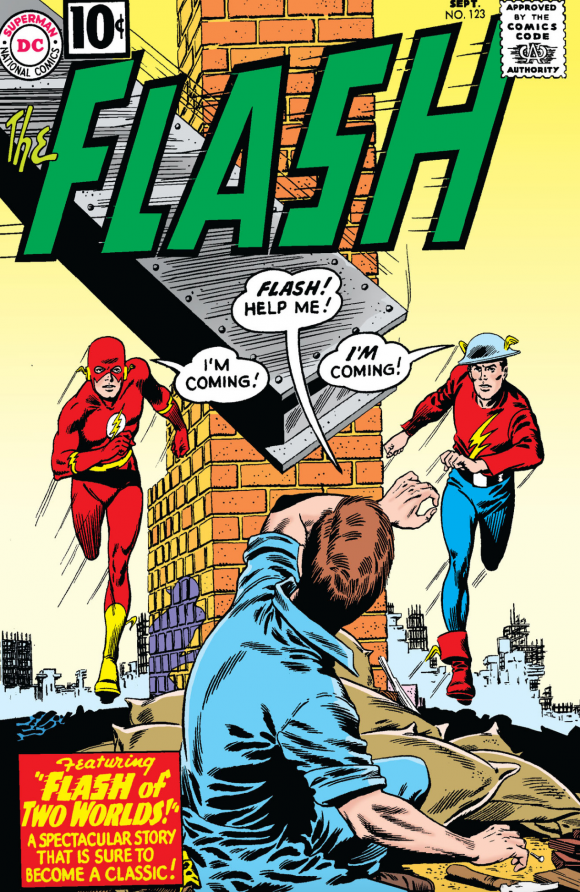
—
9. John Jones, Manhunter From Mars, DC. I still remember when I saw the comic on the newsstand in the luncheonette on the corner of East 80th Street and Foster Avenue in Brooklyn: The cover of Detective Comics #324 (Feb. 1964) featuring Batman and Robin trapped inside a giant robot head being filled with gas, leapt off the rack and into my heart. But here’s what I didn’t know: Beneath that stunning (to 8-year-old me) cover was a John Jones, Manhunter from Mars back-up feature by Jack Miller and Joe Certa.
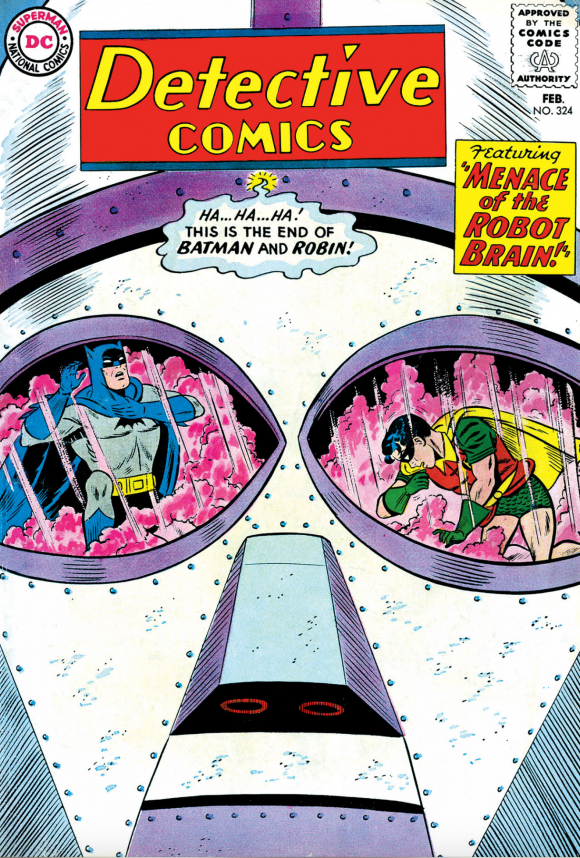
I was already a fan of Superman, but this green guy… not only could he do everything Superman did, but he could also (1) turn invisible and intangible, (2) read minds, (3) change his shape. What was he doing stuck hiding in the back of a Batman comic? Unfortunately, the Martian Manhunter only lasted for two more issues of Detective before Batman’s “New Look” replaced him with an Elongated Man back-up. Fortunately, I eventually found him again in his new home, the House of Mystery, and, of course, as a member of the JLA, but I’ve never felt John really got his due in the 1960s DCU.
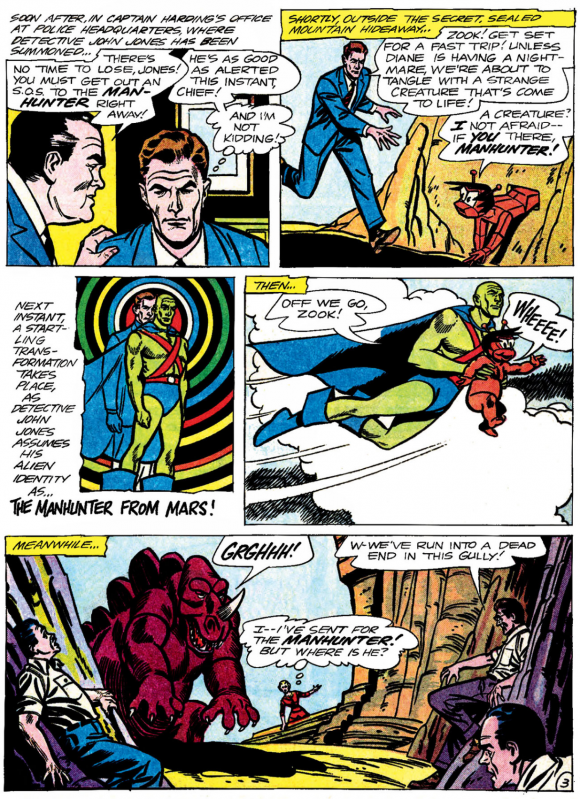
—
8. Dennis the Menace, Pine Comics. “Jeepers, Mr. Wilson! Dennis the Menace… really?” Really! Starting in 1953, a publisher called Standard/Pines picked up the license for Hank Ketcham’s syndicated daily panel and Sunday strip (and later TV show, 1959–1963); Fawcett took it over in 1958, the publisher’s only return to comic books after earlier closing and selling their comics division.
But the Dennis the Menace comics that grabbed me weren’t your flimsy little run-of-the-mill 32-page, 10-cent monthlies. Nuh-uh! I’ve already written about my unabashed love for DC’s 1960s 25-cent 80-Page Giant series, but Pines went them 25 percent better, publishing a series of 100-page Dennis the Menace Specials: Vacation Special. Christmas Special. Winter Special. Dennis the Menace In Hawaii.
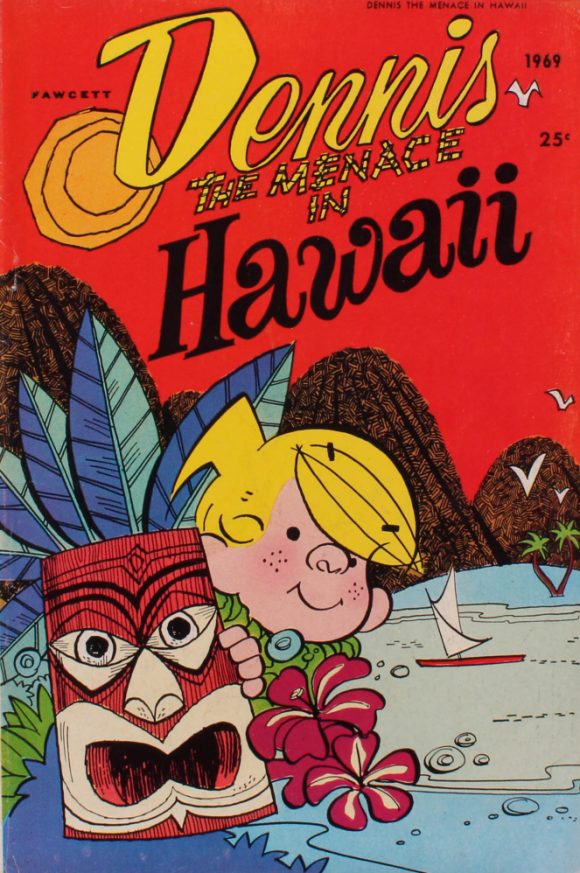
In 1958, Fawcett took over and Dennis was spending 100 pages all over the place: he went to Hollywood, Mexico, Washington, D.C., to camp. There were Best ofs and Tall Tales and Christmas and other seasonal specials. They were awesome, even if the page counts were shrinking under the 25-cent price tag, and they were subversively educational; when Dennis travelled to a place, you could actually learn something. The stories were mostly the work of writer Fred Toole and artist Al Wiseman.
My favorites? Still Dennis the Menace In Hawaii and Dennis the Menace In Washington, D.C.
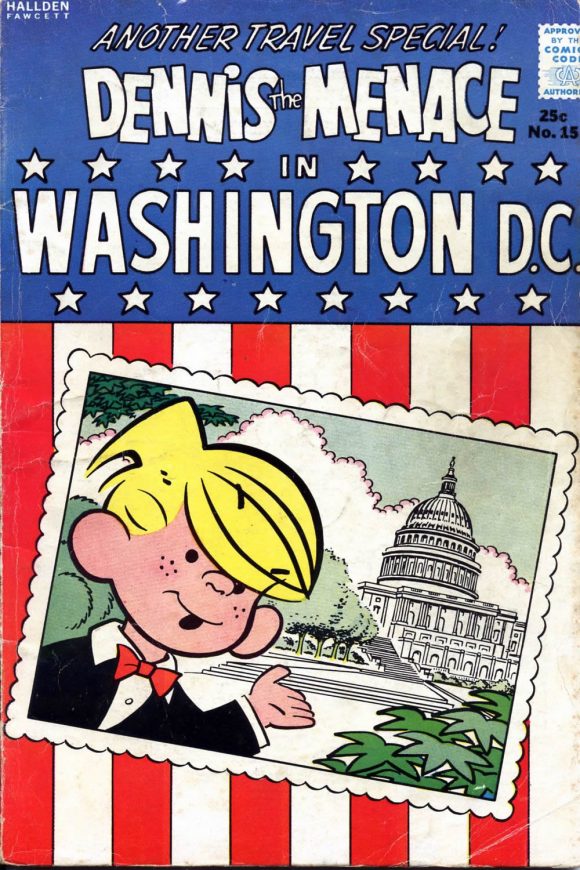
—
7. The Phantom Stranger, DC. A favorite title of mine from the 1960s was the preview comic Showcase, from whence sprung DC’s Silver Age superhero revival. Showcase was past its hit-making prime by #80 (Feb. 1969), but it could still hit on something interesting, even if they were reprints of a failed six-issue 1950s series, The Phantom Stranger (Aug./Sept. 1952–June/July 1953).
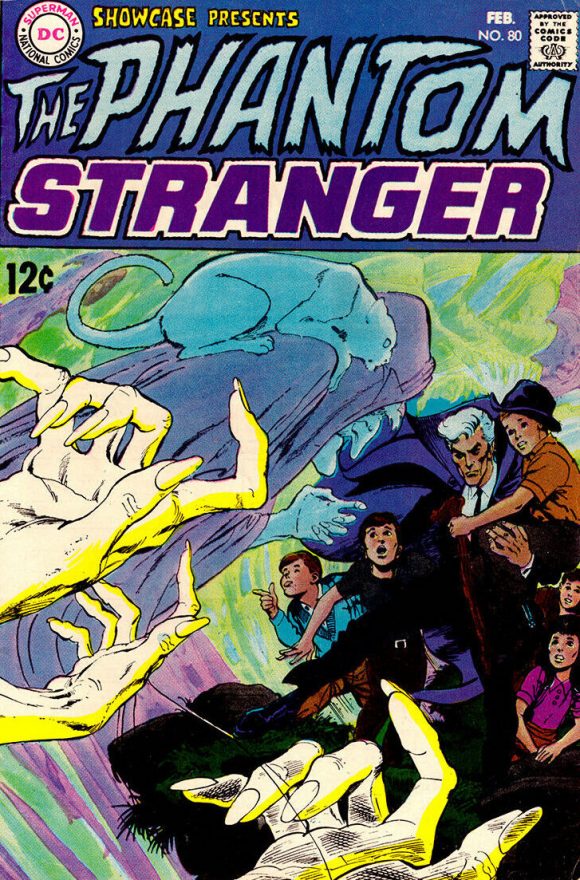
Preceding the Comics Code Authority, the Phantom Stranger was a fantasy title that could actually indulge in supernatural elements in the stories by John Broome and Carmine Infantino, and were, for the time and place, not bad. Flash-forward to 1969, repackage some of those stories in a new framing sequence by Mike Friedrich, Jerry Grandenetti, and Bill Draut under a killer Neal Adams DC horror cover and you’ve got something there.
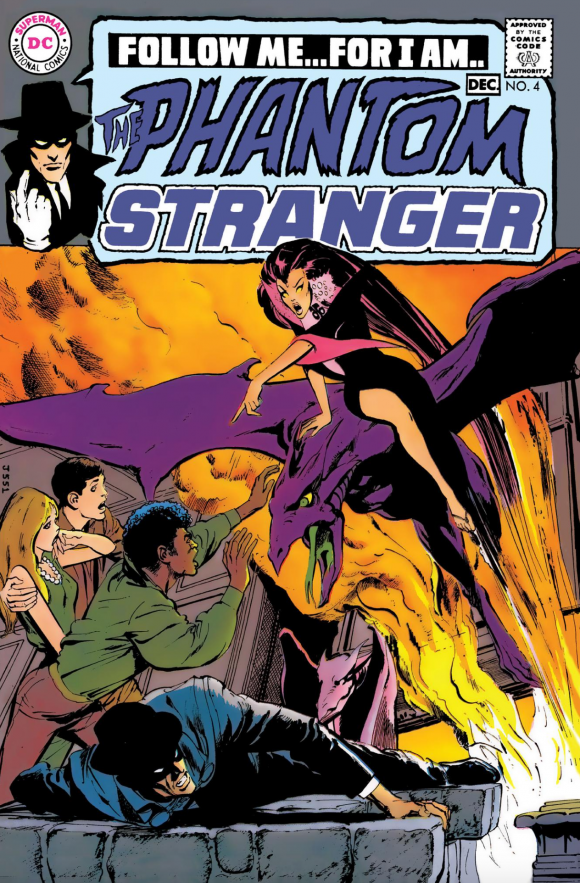
Enough to earn the Stranger his own title the following year, one that would start slow with reprints wrapped in framing sequences, then explode from #4 on, with stories by Robert Kanigher and Adams, then Mike Sekowsky, and then a landmark run with art by Jim Aparo.
—
6. Supergirl, DC. As much as I loved Superman, I collected Action Comics specifically for the Supergirl back-up stories. There was something going on in those stories (which began in #252 in May 1959) that wasn’t like what was happening in any other Superman title, or any DC Comics title, for that matter: continuity.
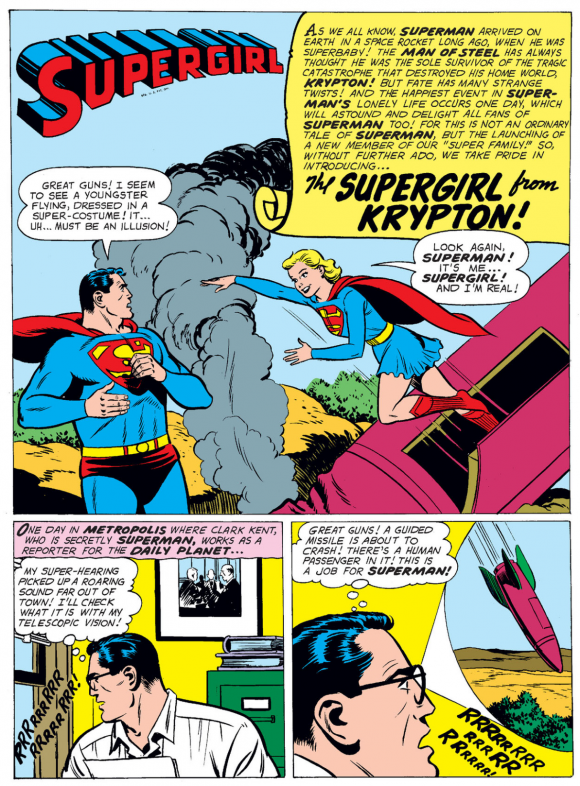
Nothing big, mind you. These 13-page back-ups were largely stories done-in-one, especially early on, but as time passed, more and more after Supergirl’s existence was revealed to the world in Action #285 (Feb. 1962), the stories left threads and subplots that would run from issue to issue, especially in the storylines about the return of Supergirl’s Kryptonian mom and dad, Alura and Zor-El, and the one that dealt with Linda Danvers’ fraught relationship with Lex Luthor’s sister, Lena Thorul.
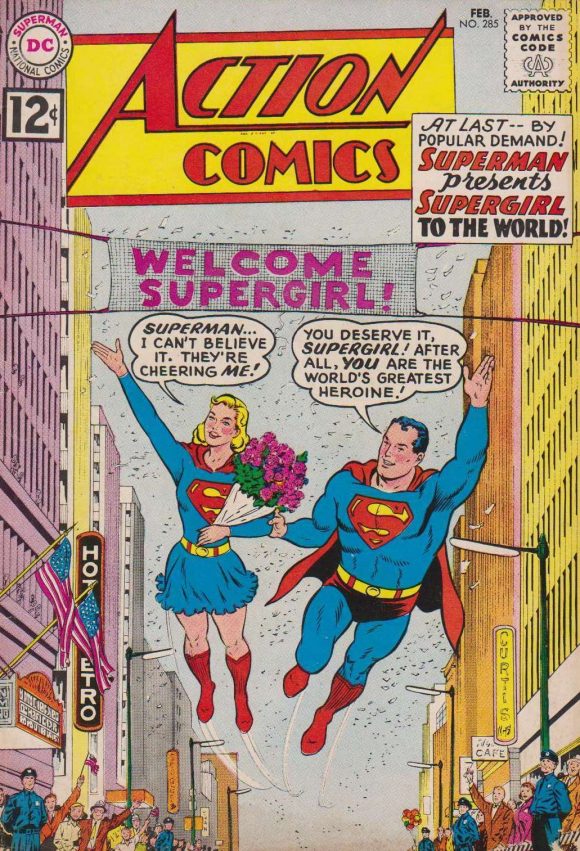
The art was by Jim Mooney, and it wasn’t until years later that I learned that Superman creator Jerry Siegel had written most of those great stories, but if anyone should be able to write a convincing Kryptonian cousin, it was the guy who started it all.
—
5. Wonder Woman, DC. There was a used bookstore on St. John’s Place, just around the corner from where we lived on Buffalo Avenue, owned by a man named Dave Solomon, and he sold coverless comic books, two for a nickel. My father had bought secondhand pulps from Dave when he was a kid, and he took us in when we were little to find our own things. I found Wonder Woman.
Not the Amazon warrior she had been or would eventually become again, but the star of what had essentially become, as I called it in the introduction to Wonder Woman: The Amazon Princess Archives Vol. 1, “romantic fairy tales for kids.” By 1958, starting in WW #98, editor/writer Robert Kanigher (successor to creator Charles Moulton, aka William Moulton Marston) and the art team of Ross Andru and Mike Esposito swept away any sign of her feminist roots and went full out “girly” comics. Steve Trevor still chased after her hand in marriage, and Diana fought dragons and genies and nature. She made friends with Mer-Boy and Bird-Boy, and this is the era that introduced Wonder Tot and Wonder Girl (who were originally just earlier incarnations of the character, like Superboy was to Superman).
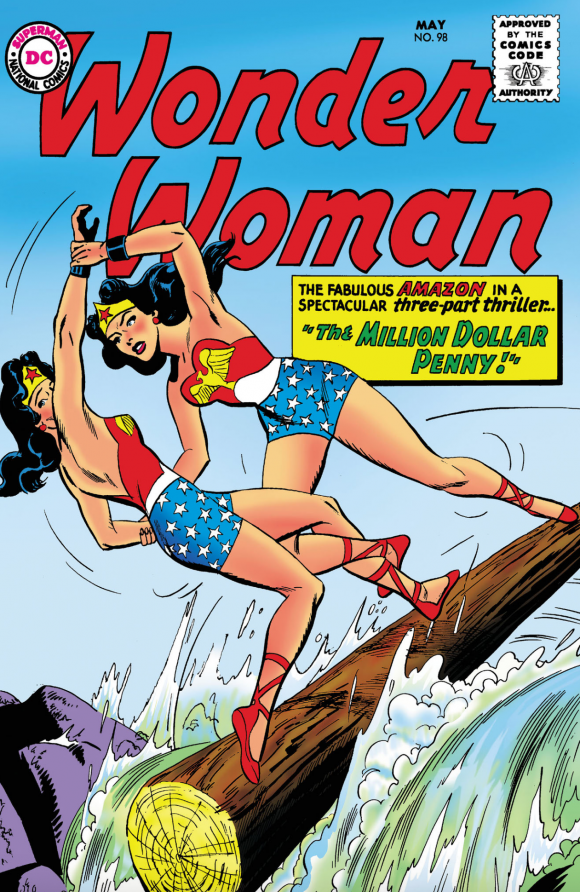
It didn’t matter that Kanigher kept changing her origin or the parameters of Diana and Steve’s relationship to suit the needs of a story. It was crazy, plot-as-you-go-along fun and the insanity of it all appealed to my 4- and 5- and 6-year-old imagination, making me a fan for life.
—
4. Peacemaker, Charlton. Charlton Comics under editor Dick Giordano deserves serious credit for the publisher’s 1960s run at reviving their superhero (or “Action Hero”) line. This self-contained comics operation — everything from editorial to creative to production, printing and shipping were done out of one building in Derby, Connecticut — was started in the early 1940s by two businessmen who met in jail while doing time for copyright infringement and political corruption, if I remember correctly — and published magazines, comics and books in whatever genres were currently popular until the mid-1980s. They were the Poverty Row of Comics: They paid squat and the product was poorly separated and badly printed.
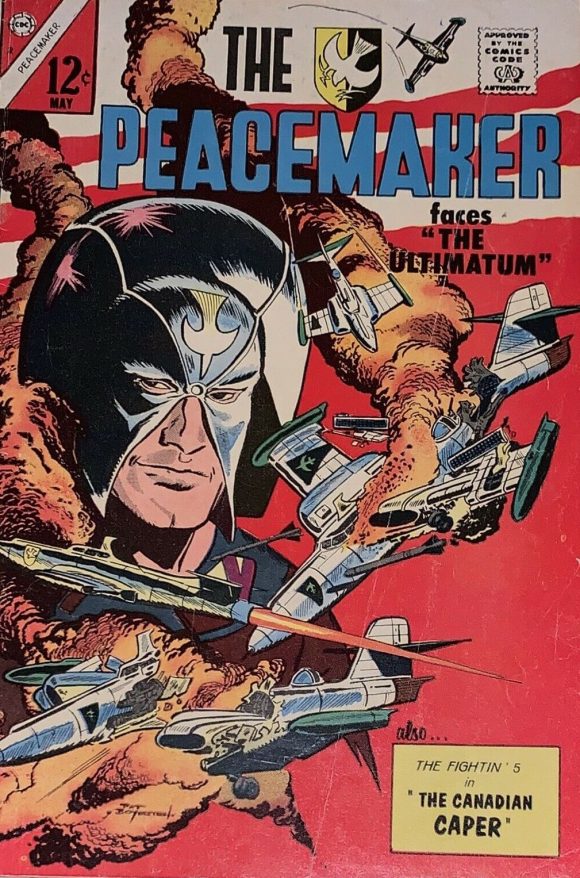
And yet, they got a lot of good work out of a lot of talented people for squat, including one of their mainstay contributors, Pat Boyette. Possessing a quirky style that made him a natural for the company’s line of horror comics, Boyette could also hold his own on an action/adventure strip, which he proved during an impressive run on the Phantom and, of course, Peacemaker.
AKA diplomat Christopher Smith, Peacemaker was a man who loved peace so much, according to his catchphrase, he was willing to fight for it! Twenty years later, when I wrote Peacemaker for his new home at DC Comics, he’d become a man who loved peace so much he was willing to kill for it. But it was the ’80s, so grim and gritty it was… and is; I haven’t seen it yet, but it looks like the tone of the character under writer/director James Gunn probably owes a little something to the over-the-top psychotic take on him from Vigilante and the 1987 Peacemaker miniseries.
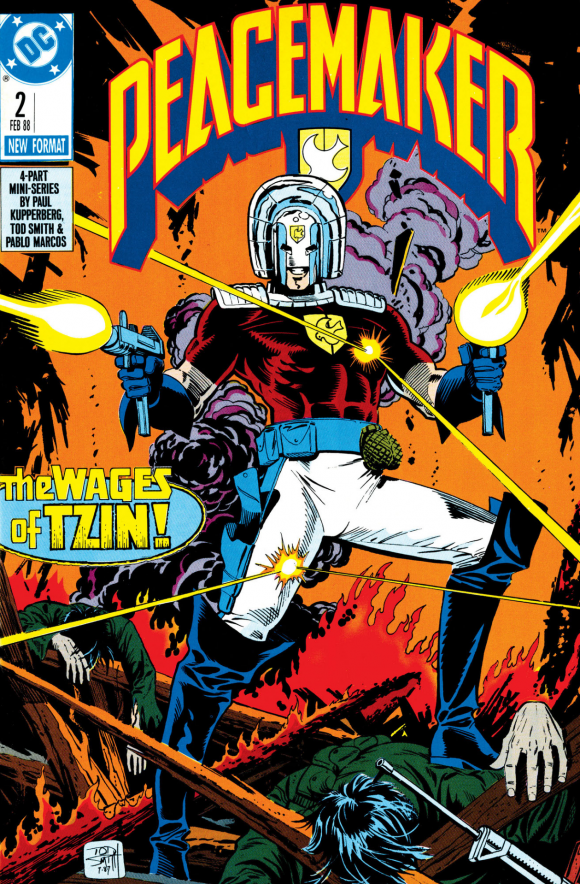
But it was Boyette’s kinder, gentler Peacemaker I fell in love with, even if all there was of him were a handful of back-ups in Fightin’ 5 and five issues of his own title. Charlton Comics may have been cheesy comics, but, dammit, they always had heart.
—
3. Captain America, Marvel. The cover of The Avengers #4 (March 1964) screamed, “Captain America Lives Again!”
“Lives again?” When had he been alive before? And did I really care the first time I saw that cover with the star-spangled Cap leaping at the reader at the head of the Avengers? I did not! Next to Superman, Captain America was about the coolest looking character I’d ever seen, and that shield of his was awesome… and, unless they were just making it up for this story, he also had a history.
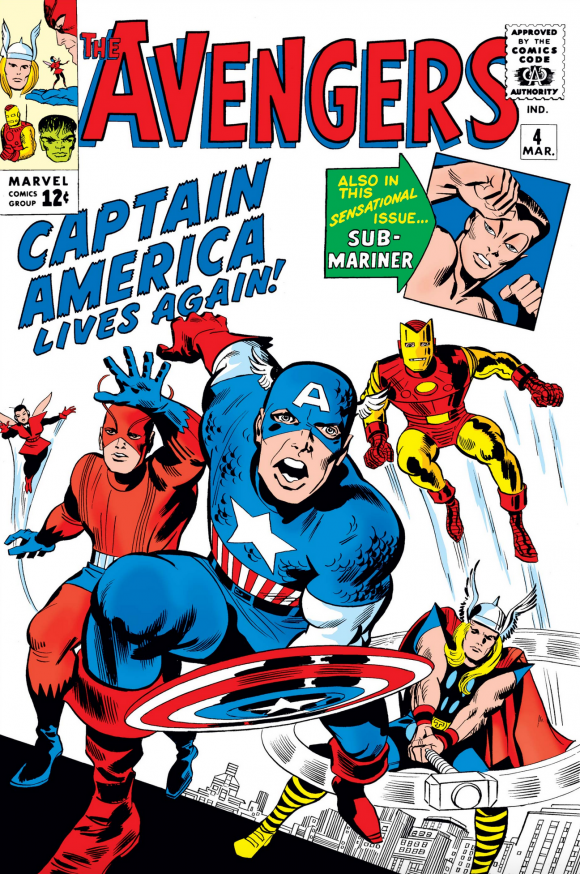
Cap had me! While I wasn’t willing to spend my limited resources on most Marvel titles (my older brother got those and though I was forbidden from touching his comics, I’d read his copies anyway when he wasn’t home), I did make an exception for The Avengers when Steve Rogers was defrosted and, a few months later, added Tales of Suspense, when the Captain came on to share the book with Iron Man.
Like any great character, it didn’t matter what crap various creative teams dragged him through in the ’70s and beyond (including my own one, very bad fill-in issue); you can’t screw up Captain America for long. He always finds his way back to the right path. America!
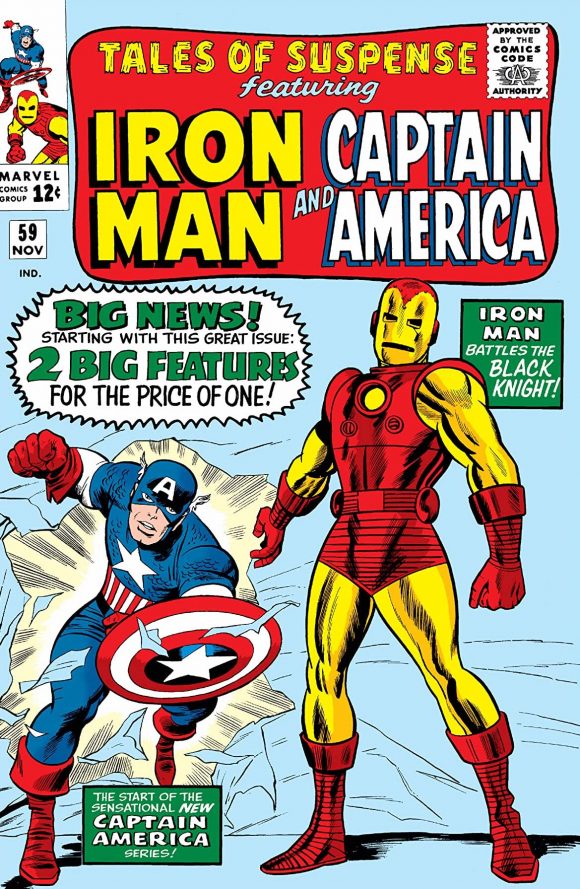
—
2. Plastic Man, Quality Comics/DC. When I first saw Plastic Man in the 1966 DC Comics “revival” by Arnold Drake and Gil Kane, I loved the character. He was wacky, in that silly Jerry Lewis way that I loved. I had no idea that I was only reading a watered-down version of another writer’s faded memory of one of the consistently best comic strips of the 1940s.
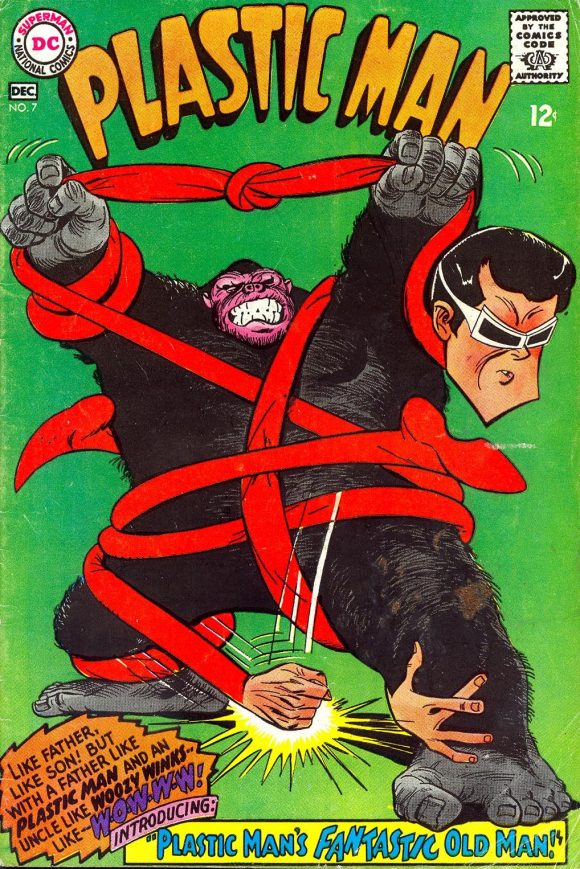
This I would learn by reading my first true Plas story shortly thereafter in the pages of Jules Feiffer’s Great Comic Book Heroes (see My 13 Favorite 1960s Comic Book Books). Created by cartoonist Jack Cole, Plastic Man made his debut in Police Comics #1 (Aug. 1941) and quickly established the criminal-turned-shape-changing-champion-of-justice as the lynchpin of a crazy, cartoonish world. He was called Plastic Man because he could change his shape and stretch, but he was the character off of which all the craziness bounced. Cole’s Plas wasn’t one of the clowns; he was the ringmaster.

I’ve come to believe that Plastic Man is one of those characters, like Elsie Segar’s Popeye, that ever really only worked under its creator. Others have done interesting things with Plas over the years, but no one (including myself, the couple of times he passed through a story I was writing) has ever gotten him “right.”
—
1. Superman, DC. As it began for the comic book industry, so it began for me with Superman. “Superman, strange visitor from another planet, who came to Earth with powers and abilities far beyond those of mortal men.” Those words, intoned by announcer Jackson Beck at the start of every one of the 104 episodes of the Adventures of Superman starring George Reeves, still give me goosebumps.
My first exposure to the Man of Steel was circa 1960, when the TV show I watched on our black-and-white Philco TV before my 7:30 p.m. bedtime ran the 1940s Fleischer Studios theatrical cartoons. Not long after, I saw the same guy but in full color on the cover of a comic book on the newsstand of Flemmy’s candy store around the corner, and I put two and two together.
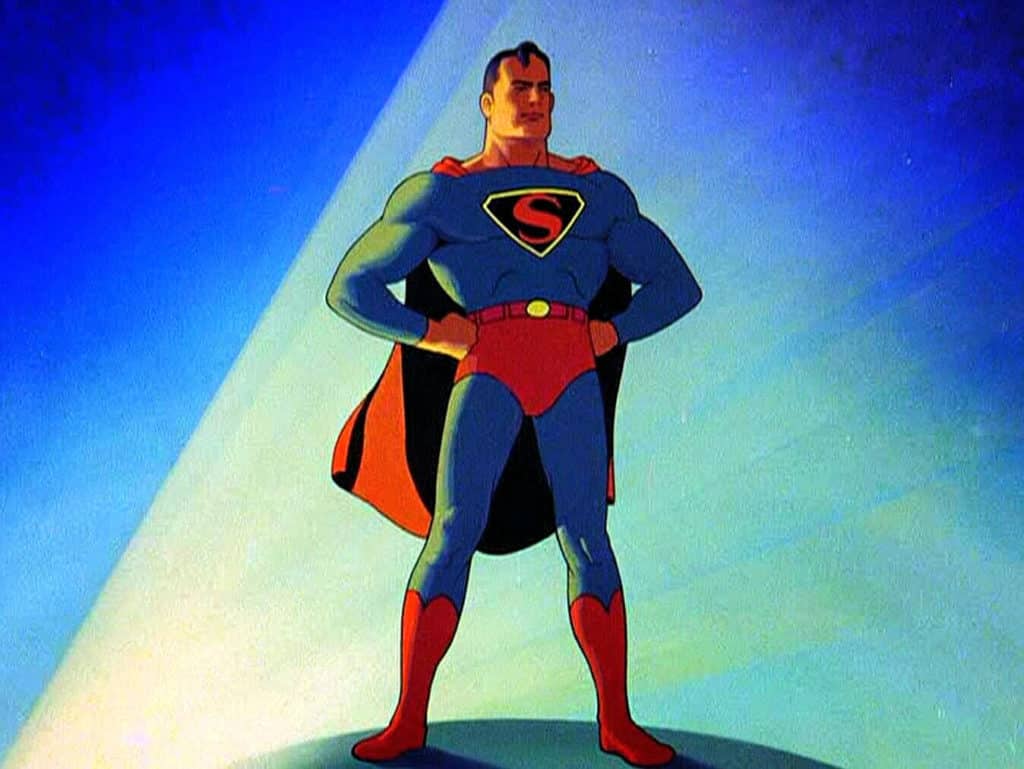
As I said earlier, comic books were a refuge for me, and Superman represented the ultimate protector that a frightened kid like me could hope for. I knew he wasn’t real and that he wasn’t going to come flying through the window to save me, but he offered me a world I could escape to where the bad guys couldn’t get to me.
“Up, up, and away!”
—
Paul Kupperberg has been writing comic books from Archie to Zatanna for 45 years at DC, Archie, Charlton, Marvel, Bongo and others. He is also the author of Paul Kupperberg’s Illustrated Guide to Writing Comics (Charlton Neo Press); I Never Write for the Money… But I Always Turn in the Manuscript for a Check (Comics Career); the comic book industry-based murder mystery The Same Old Story, the short-story collection In My Shorts: Hitler’s Bellhop and Other Stories, and JSA: Ragnarok (all from Crazy 8 Press), all of which are currently — or shortly will be — available at Amazon.
—
MORE
— PAUL KUPPERBERG: My 13 Favorite Funky JIMMY OLSEN Covers. Click here.
— PAUL KUPPERBERG: My 13 Favorite Short-Lived Series of the 1960s. Click here.

November 15, 2020
Thank you once again, Mr. Kupperberg, for your contributions to this site.
November 15, 2020
Fascinating stuff and I learned something – where the ‘Sad Sack’ name came from. I read a couple of his books as a kid, but they rarely made it to the UK.
And I don’t think we ever had Dennis the Menace, we had our own in the Beano. In that X-Men/Doom Patrol way, they began around the same time. Our Dennis is still around, but I don’t think his world is as enjoyably violent as it used to be. What a world.
November 15, 2020
Great to see some love for Sad Sack! One of my favorites from the sixties.
November 16, 2020
Wonderful…and I absolutely disagree with all of your choices as anything like ‘my’ favorite. And of course, that’s our perogative as individuals! Thanks for sharing this–interesting to see. Spider-man…Rip Hunter…Atom…ah, well!!
November 16, 2020
I maintain Len Wein’s Phantom Stranger scripting run was the single best run of his career. Swamp Thing got all the kudos then, but his Phantom Stranger, brilliantly illustrated by Jim Aparo, was his real masterpiece in my book. And Aparo’s. A terrific run.
November 16, 2020
Darn you Mr Grant, now you have me eyeing up the PS Omnibus due in 2022.
September 18, 2021
Would love to see something on Wayne Boring. Love all you done so far
June 15, 2022
What a great list. Mine is far different, but seeing some out of the ordinary characters on a list like this is a lot of fun. Sad Sack, Dennis the Menace (a personal favorite), and Plastic Man (who I came to know from his cartoon series) are all great choices.